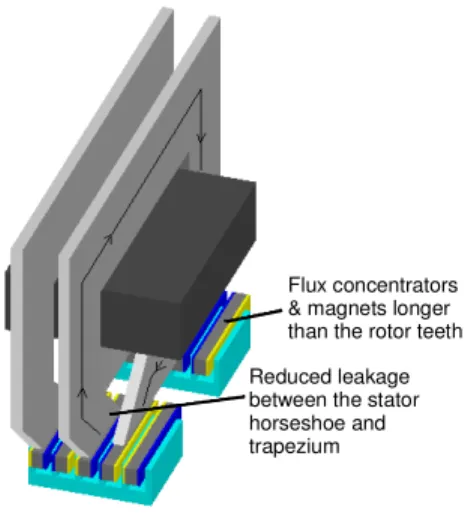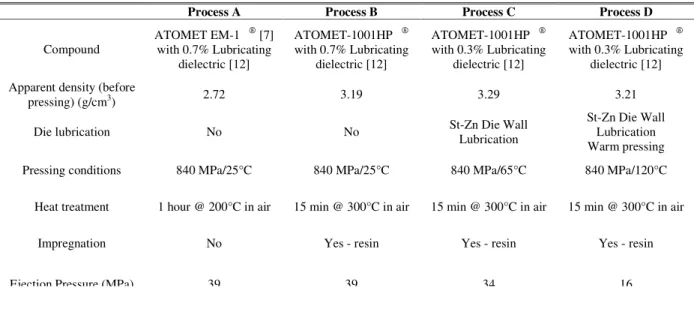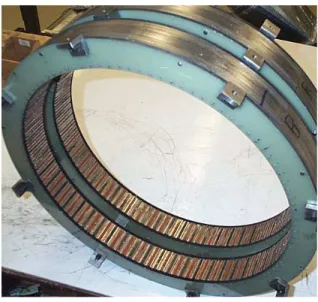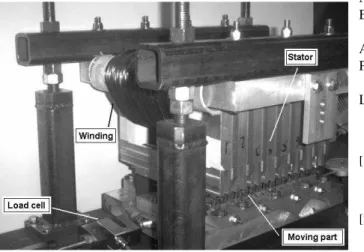Publisher’s version / Version de l'éditeur:
ICEM 2004, 2005
READ THESE TERMS AND CONDITIONS CAREFULLY BEFORE USING THIS WEBSITE. https://nrc-publications.canada.ca/eng/copyright
Vous avez des questions? Nous pouvons vous aider. Pour communiquer directement avec un auteur, consultez la
première page de la revue dans laquelle son article a été publié afin de trouver ses coordonnées. Si vous n’arrivez pas à les repérer, communiquez avec nous à PublicationsArchive-ArchivesPublications@nrc-cnrc.gc.ca.
Questions? Contact the NRC Publications Archive team at
PublicationsArchive-ArchivesPublications@nrc-cnrc.gc.ca. If you wish to email the authors directly, please see the first page of the publication for their contact information.
NRC Publications Archive
Archives des publications du CNRC
This publication could be one of several versions: author’s original, accepted manuscript or the publisher’s version. / La version de cette publication peut être l’une des suivantes : la version prépublication de l’auteur, la version acceptée du manuscrit ou la version de l’éditeur.
Access and use of this website and the material on it are subject to the Terms and Conditions set forth at
Compaction of SMC powders for high saturation flux density
Dubois, M. R.; Lefebvre, L.-P.; Lemieux, P.; Dusablon, E.
https://publications-cnrc.canada.ca/fra/droits
L’accès à ce site Web et l’utilisation de son contenu sont assujettis aux conditions présentées dans le site LISEZ CES CONDITIONS ATTENTIVEMENT AVANT D’UTILISER CE SITE WEB.
NRC Publications Record / Notice d'Archives des publications de CNRC:
https://nrc-publications.canada.ca/eng/view/object/?id=711a2bbd-da9c-4776-997e-7dba276c0f09 https://publications-cnrc.canada.ca/fra/voir/objet/?id=711a2bbd-da9c-4776-997e-7dba276c0f09Abstract — The application of Soft Magnetic Composites (SMC) to a Transverse-Flux Permanent Magnet (TFPM) machine is studied. Four SMC material and pressing methods are investigated for high saturation flux density. Low dielectric content, Die Wall Lubrication and cold pressing allow the best combination of high material density (7.45 g/cm3), high saturation flux density (1.53 T) and good
mechanical resistance (65 MPa). 624 Flux concentrators were produced with SMC material and inserted in the rotor of a TFPM machine with toothed rotor. Torque and flux measurements are presented and are validated with finite element analysis.
I. INTRODUCTION
The development of Soft Magnetic Composite (SMC) materials has opened a window in the field of electrical machines [1]-[3]. The isotropic characteristics of SMC materials are especially attractive for the development of machines carrying three-dimensional magnetic fields. Also, the manufacturing process related to the use of SMC materials allows additional flexibility in the shapes and geometries that can be mass produced.
The family of electrical machine topologies referred to as the Transverse-Flux Permanent Magnet (TFPM) machine is a good example of a machine containing three-dimensional fields and unconventional shapes, where the isotropic properties of SMC materials may represent an advantage.
Ref. [4], [5] give a broad survey of existing TFPM machine topologies. It appears that many of the TFPM topologies require large amounts of SMC material for their construction, eventually leading to high iron losses and low machine efficiency. Despite their advantages, the grades of SMC materials currently available will not replace the standard Fe-Si laminations in most applications. The magnetic characteristics of SMC materials are not yet competitive with those of Fe-Si laminations for a planar flow of the magnetic fields. For a two-dimensional
magnetic field, the iron losses of Fe-Si laminations are lower, and the saturation flux-density and magnetic permeability of Fe-Si laminated materials are higher [5]. In addition, Fe-Si steel is mechanically much stronger than the SMC materials available.
The TFPM machine with toothed rotor [5], [6] was developed to minimize iron losses in TFPM machines, by using Fe-Si laminations in the stator construction as much as possible. Fig. 1 and Fig. 2 illustrate the TFPM machine with toothed rotor. The stator core is made of laminated steel. The rotor toothed structure is also made of laminated steel, which provides a magnetic path between adjacent magnets and at the same time a strong mechanical structure for retaining the rotor pieces. In the rotor assembly, the flux concentrator carry a magnetic flux with a strong three-dimensional content, making the use of SMC material almost inevitable. In addition, the production of flux concentrators with Fe-Si laminations is probably not economically interesting. Therefore, the use of SMC material is strongly advised for the flux concentrators.
Flux concentrators & magnets longer than the rotor teeth Reduced leakage between the stator horseshoe and trapezium
Figure 1. TFPM machine with toothed rotor.
Compaction of SMC powders for high saturation flux density
M. R. Dubois
Laboratoire d’Électrotechnique, Électronique de Puissance et Commande Industrielle (LEEPCI), Université Laval, Pav. Pouliot, room 2317B, G1K 7P4, Québec, Canada,
phone: (+1) 418 656 2131 ext 2982, fax: (+1) 418 656 3159, e-mail: mrdubois@gel.ulaval.ca
L.-P. Lefebvre, P. Lemieux
Industrial Materials Institute/ National Research Council, Canada
75 de Mortagne, J4B 6Y4, Boucherville, Québec, Canada, phone: (+1) 450 641 5031, fax: (+1) 450 641 5105, e-mail: louis-philippe.lefebvre@nrc.ca, patrick.lemieux@nrc.ca
E. Dusablon
Eocycle Technologies Inc., Canada
49 Belair, suite 106, G6V 6K9, Lévis, Québec, Canada,
Magnetic insulator Flux
Concentrator
PM
Figure 2. TFPM machine with toothed rotor. Rotor view. The main reason for using TFPM machines is usually the availability of a high torque per mass of active material. Consequently, the magnetic flux per pole at no-load φpnl should be increased as much as possible, in order
to obtain a high torque value. Ref. [5] derives the relationship between φpnl and the machine nominal torque.
One important limitation to the increase of φpnl is the
saturation flux-density Bsat of the flux concentrator, and its
relative magnetic permeability.
The aim of the present study is to develop SMC parts with the highest Bsat value, by experimentally varying the
following parameters:
• Percentage of lubricating compound in the initial material composition,
• Die temperature during pressing,
• Type of lubricating method during pressing, • Heat treatment.
Four combinations of those parameters were tested and the resulting Bsat and magnetic permeability were measured for each of the combinations. In all cases, the mechanical strength and iron losses of the SMC parts were affected by the combination of parameters chosen. These values were also measured and reported in the study.
Impregnation was also considered in order to increase mechanical properties of the SMC parts produced.
Finally, a complete TFPM machine with toothed rotor was built with the chosen SMC material.
The resulting machine design is presented in the paper.
II. SMC PARTS PRODUCTION PROCESS The knowledge of the powdered iron type, and the type of binding and lubricating compound used is not sufficient to determine the resulting physical properties. The pressing conditions, the type of heat treatment applied after pressing and the use of an impregnation technique also contribute to the SMC material properties. The general production route used for compaction of the SMC parts is depicted in Fig. 3. Table I details the four forming methods and materials used in this study for the compaction of SMC parts.
The base material (before pressing) consists of ATOMET-EM1 [7] or ATOMET-1001HP iron powder, produced by QMP . ATOMET-1001HP is QMP brand name for an almost-pure powdered iron with near-100% Fe content. ATOMET-EM1 is QMP brand name for a blend of ATOMET-1001HP and about 1% of insulating resin compound, which is proprietary to QMP . For processes A, B, C and D, a lubricating dielectric compound is added to the base material, which is an iron-dielectric material in which the iron-dielectric acts as a lubricant during compaction as well as an insulator after a moderate temperature heat treatment [12]. For process A, it must be noted that electrical insulation between particles is provided by both lubricating dielectric and resin compound.
Compaction is achieved by pressing the material between a lower and an upper punch at a pressure of 840 MPa. In all four processes, the presence of lubricating dielectric helps compacting the powder and allows ejecting the parts after pressing.
Figure 3. Production route used for SMC materials.
Table I: Description of SMC compounds, lubrication and pressing conditions.
Process A Process B Process C Process D
Compound ATOMET EM-1 [7] with 0.7% Lubricating dielectric [12] ATOMET-1001HP with 0.7% Lubricating dielectric [12] ATOMET-1001HP with 0.3% Lubricating dielectric [12] ATOMET-1001HP with 0.3% Lubricating dielectric [12] Apparent density (before
pressing) (g/cm3) 2.72 3.19 3.29 3.21
Die lubrication No No St-Zn Die Wall Lubrication
St-Zn Die Wall Lubrication Warm pressing Pressing conditions 840 MPa/25°C 840 MPa/25°C 840 MPa/65°C 840 MPa/120°C
Heat treatment 1 hour @ 200°C in air 15 min @ 300°C in air 15 min @ 300°C in air 15 min @ 300°C in air
Impregnation No Yes - resin Yes - resin Yes - resin
A large amount of lubricating dielectric decreases the resulting material density and corresponding magnetic permeability and saturation flux density. Processes A and B contain 0.7% of lubricating dielectric. For processes C and D, the amount of dielectric was reduced to 0.3%. In the case of processes C and D, innovative pressing methods were used to further increase the density and resulting magnetic properties. Electrostatic Die Wall Lubrication (DWL) technique was used [8]-[11], which consists of spraying St-Zn powder on the inner surfaces of the die before the filling operation and compaction. For material D, warm pressing was applied along with the DWL technique. The die temperature was increased to 120°C before pressing. The resulting ejection pressures are indicated in Table I.
The thermal treatment applied is used for two purposes: stress annealing and increase of mechanical properties. Stress annealing reduces hysteresis losses. Curing of the insulating dielectric produces a reticulation of the polymer or an activated thermal oxidation bonding effect to increase strength between particles [12]. Therefore, lubricant transformation during the thermal treatment increases the mechanical properties of the material.
Resin impregnation of materials B, C and D allows increasing the material mechanical strength.
III. EXPERIMENTAL RESULTS
Processes A, B, C and D were used for the forming of the following geometries:
• for each process, 5 bars of dimensions 31.75 mm x 12.70 mm x 6.35 mm for the measurements of the Transverse Rupture Strength (TRS),
• for each process, 2 rings of 52.6 mm outer diameter, 43.4 mm inner and thickness 6.35 mm were used for the measurements of the magnetic characteristics,
• for each process, 5 bars of dimensions 54 mm x 10 mm x 12 mm for preliminary tests on the TFPM machine with toothed rotor.
The resulting saturating flux densities, relative permeabilities and densities are presented in Table II. The lower dielectric contents of processes C and D increased the saturating magnetic flux density Bsat and magnetic
permeability. This can easily be explained by the higher iron density inside the parts, which also results in a higher material density (7.45 g/cm3) after heat treatment.
The use of a warm pressing method at 120°C (process D) increases slightly Bsat and permeability values.
However, it strongly decreases the electrical insulation between the iron particles, leading to a much lower electrical resistivity. For operation at higher electrical frequencies and larger parts, it is expected that process D will lead to higher eddy current losses.
Table III presents the resulting iron losses measured at 65 Hz and 110 Hz, which is the range of electrical frequencies expected for the TFPM machine developed. The loss measurements have been performed at flux density levels of 0.5 T, 1.0 T and 1.5 T. The iron losses include both hysteresis and eddy current losses. For process A, a flux density of 1.5 T could not be obtained due to the lower Bsat value of this material. Two effects are
observed:
• process A leads to iron losses 6 – 8 % higher than for the other processes,
• process D leads to higher iron losses than process C, especially at 110 Hz.
The first effect can be explained by the higher hysteresis losses, resulting from larger residual internal stresses. These are related to the lower heat treatment temperature.
The second effect can be explained by the lower electrical resistivity of the parts resulting from process D that increases the eddy current losses, which become more apparent as the frequency increases.
Table II : Experimental properties of the resulting parts.
Process A Process B Process C Process D
Density before heat treatment (g/cm3) 7.22 7.33 7.45 7.45
Electrical resistivity before heat treatment (µΩ-cm) 8400 10400 8000 2600
Density after heat treatment (g/cm3) 7.21 7.31 7.45 7.45
Electrical resistivity after heat treatment (µΩ-cm) 7600 5600 4000 1500
DC relative permeability 220 280 370 410
Flux density @ 12 kA/m (T) 1.39 1.46 1.53 1.57
Table III : Experimental values of resulting iron losses and mechanical strength
Process A Process B Process C Process D
Iron losses (W/kg) @ 65 Hz – 0.5 T 3.6 3.4 3.3 3.4
Iron losses (W/kg) @ 65 Hz – 1.0 T 11.2 10.5 10.3 10.7
Iron losses (W/kg) @ 110 Hz – 0.5 T 6.3 5.9 5.5 5.8
Iron losses (W/kg) @ 110 Hz – 1.0 T 19.1 18.0 18.0 18.2
Iron losses (W/kg) @ 110 Hz – 1.5 T N/A 31.3 32.9 34.2
Table III also presents the mechanical properties resulting from the various processes. Mechanical properties are usually very important in machine applications. The results indicate that impregnation has a significant effect on the Transverse Rupture Strength (TRS). Process B leads to 35% higher TRS than for the parts resulting from process A, even though process B has no binding resin.
The parts resulting from the four processes are shown in Fig. 4, just before impregnation. As mentioned earlier, the heat treatment affects the dielectric inside the parts. This process is named delubrication. On the surface, a thin layer of dielectric residue becomes visible around the part after heat treatment. For an initial dielectric content of 0.3%, the layer thickness is the lowest as seen on Fig. 4.
Also, it appears that decreasing the dielectric content has a detrimental effect on the TRS. Processes C and D lead to much lower TRS values than process B, although they have equal heat treatments and impregnations.
<
Figure 4. Surface of SMC bars after heat treatment.
IV. APPLICATION TO TFPM MACHINE WITH TOOTHED ROTOR
A prototype of the TFPM machine with toothed rotor was built with flux concentrators made of SMC material. For more cautiousness, the process giving the highest mechanical resistance was selected, i.e. process B, even though lower saturating flux density was obtained with process B compared to processes C or D. Fig. 5 shows the resulting flux concentrators. Fig. 6 shows one rotor ring of the machine built. Each rotor ring contains 104 flux concentrators, for a total of 624 flux concentrators of dimensions 48 mm x 6 mm x 12 mm for the three phases.
Fig. 7 shows the machine with the stator fully mounted, and the rotor ring of Fig. 6 mounted around the stator. The no-load flux per pole pair φpnl was measured, giving
272 µWb per pole. The value expected from finite element analysis (FEA) was 271 µWb. The FEA was performed on a three-dimensional magnetostatic model, which included a
Figure 5. Flux concentrators made of SMC material with process B. Two of them have magnets mounted on their sides.
Figure 6. Rotor ring for one phase of the TFPM machine with toothed rotor.
Figure 7. Prototype of the TFPM machine with toothed rotor. Three stator phases and one rotor phase are shown. A
B
C
SMC material with the values of saturation flux density and permeability as those given in Table II for process B. The nominal torque value of the TFPM machine with toothed rotor was measured. A value of 778 Nm was obtained, while the FEA predicted a value of 722 Nm. The temperature was also measured at the surface of the flux concentrator during nominal operation. The temperature reached 64°C, while the stator winding reached 66°C after a 2-hour operation. Therefore, no excessive heating was observed on the surface of the SMC parts.
A second set of measurements performed on the flux concentrators was made on a 16-pole linear actuator (shown in Fig. 8), using the TFPM topology with toothed rotor. Tangential static forces were measured as a function of the translator relative position. The forces were first measured with all flux concentrators made out of laminated Fe-Si steel, grade M-45. Then, all flux concentrators were replaced with SMC material (process B). The force measurements are reported in Fig. 9. Surprisingly, the replacement of Fe-Si laminations by SMC material brings an increase in the measured forces. Such behaviour can be explained by the presence of a distributed air gap inside the Fe-Si flux concentrator, between the insulated laminations. With the presence of a flux component perpendicular to the laminations plane, the magnetic permeability is very low in the Fe-Si laminations in that direction. Thus, the isotropic characteristics of the SMC material represent in this particular case a clear advantage over the laminated material.
V. CONCLUSION
Four SMC material and pressing methods were experimented for high saturation flux density. Process D, with 0.3% dielectric content, warm pressing (120°C) and Die Wall Lubrication gave a density of 7.45 g/cm3, a
saturation flux density of 1.57 T and a relative DC permeability of 410. However, low dielectric content lead to lower mechanical strength (32 MPa).
Figure 8. Linear actuator with toothed rotor.
Figure 9. Force measured on the 16-pole TFPM actuator with toothed rotor. Flux concentrator made with either laminated Fe-Si
or SMC material process B. I = 5 A, N = 538 turns. With process C, Die Wall Lubrication and cold pressing allowed a good compromise between high material density (7.45 g/cm3), high saturation flux density (1.53 T) and high
mechanical resistance (65 MPa).
624 flux concentrators were pressed with process B for high mechanical strength and were successfully inserted in the rotor of a TFPM machine with toothed rotor. The torque and no-load flux obtained with FEA matched the experimental values obtained. No excessive heating was observed during nominal operation.
32 flux concentrators were also inserted in a linear actuator. Static forces were measured with flux concentrators made of SMC material and Fe-Si laminations. The SMC parts gave higher forces due to the isotropic permeability properties.
The use of SMC parts for the production of flux concentrators in one piece and the generation of alternating flux in the rotor of a TFPM machine appears as a promising method.
Acknowledgement
This research was funded by the IRAP program of the National Research Council of Canada, by the Ministry of Natural Resources of Québec, PADTE program and by Eocycle Technologies Inc.
The powdered iron materials ATOMET-1001HP and ATOMET-EM1 were supplied by Quebec Metal Powders (QMP ).
The contribution of Charles Cyr, Ph.D. student at the LEEPCI, and Claude Gélinas is also acknowledged.
REFERENCES
[1] Persson M., Jansson P., Jack A.G., Mecrow B.C., “Soft magnetic composites offer new PM opportunities,” Metal Powder Report, pp. 24-28, Jan. 1996.
[2] Cros J., Viarouge P., Gélinas C., “Design of PM Brushless Motors using Iron-resin Composites for Automotive Applications,” In Proc. 1998 Conf. Industry App. Soc., pp. 5-11. 0 200 400 600 800 1000 1200 1400 0 4 8 12 1 P osition (m m ) F o rc e ( N ) S M C M aterial Fe-S i s teel M 45
[3] Weglinksi, B., “Soft magnetic powder composites – dielectromagnetics and magnetodielectrics,” Review on Powder Metallurgy and Physical Ceramics., vol. 4, no. 2, 1990, pp. 79-154.
[4] Dubois M.R., Polinder H., “Study of TFPM machines with toothed rotor applied to direct-drive generators for wind turbines”, Nordic Countries Power & Industrial Electronics Conf. (NORPIE 04), June 2004, Trondheim, Norway.
[5] Dubois M.R., “Optimized Permanent Magnet Generator Topologies for Direct-Drive Wind Turbines”, Ph.D. Thesis, Delft Univ. of Technology, The Netherlands, January 2004.
[6] Dubois M.R., Polinder H., Ferreira J.A., “Machine électrique à flux transverse à rotor dentelé” [In French], World Patent WO03088454, April 2002.
[7] Quebec Metal Powders, ATOMET-EM1, technical specifications, 2001.
[8] Mongeon P.-E., Pelletier S., Ziani A., U.S. Patent #6,299,690, “Die wall lubrication method and apparatus” [9] Lemieux P., Pelletier S., Mongeon P.-E., Lefebvre L.P.,
Thomas Y., Chagnon F., “A New Approach to Die Wall Lubrication for P/M Applications”, Advances in Powder Metallurgy & Particulate Materials, 2001, MPIF, Princeton, N.J., pp.3.1-3.13.
[10] Lemieux P., Pelletier S., Mongeon P.-E., Thomas Y., St-Laurent S., “Combining Electrostatic Die Wall Lubrication and Warm Compaction to Enhance Green Properties of P/M Components.” Advances in Powder Metallurgy & Particulate Materials, 2002, MPIF, Princeton, N.J., pp.3-.34 to 3-46
[11] Lemieux P., Thomas Y., Mongeon P.E., St-Laurent S., “Benefits of Die wall Lubrication for Powder Compaction”, Advances in Powder Metallurgy & Particulate Materials, 2003, Metal Powder Industries & Federation (MPIF), Princeton, N.J., USA, pp. 3.16-3.25. [12] Lefebvre L-P., Pelletier S., Thomas Y., US Patent #
6,548,012, “Manufacturing soft magnetic components using a ferrous powder and a lubricant”




